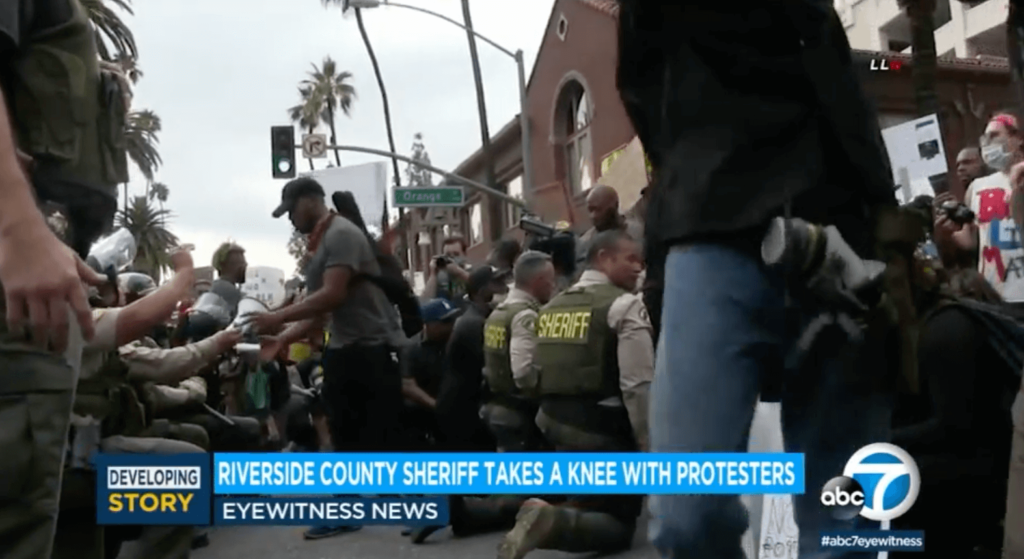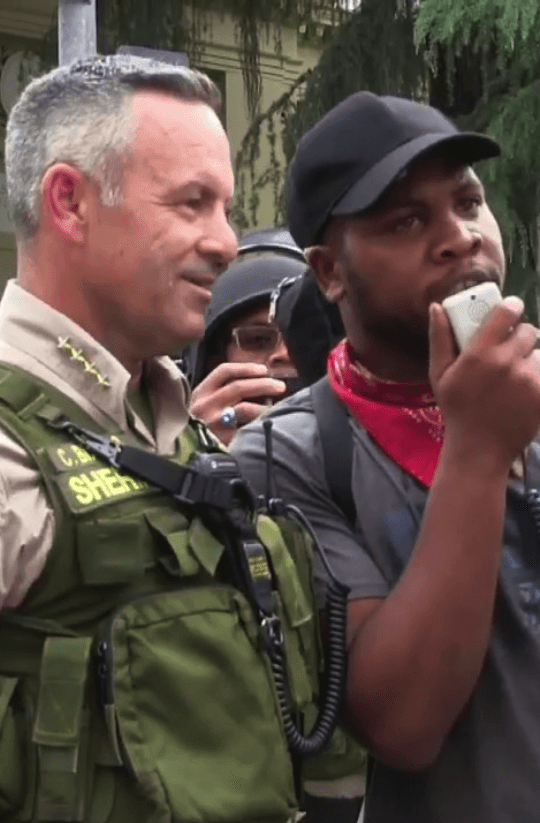You may have seen it. Or maybe not, it could easily have slipped by without you noticing.
There have been hundreds of thousands of images, videos, and stories since that fateful and awful day in late May – watching George Floyd die under the knee of a Minneapolis police officer. Like many of you, something changed in me – in us, in our country, all around the globe – in its aftermath.
But, among all of the images, videos, and stories about the realities of systemic racism and the ongoing debate of what should be done about it, there is one moment that continually gives me hope. It happened just days afterward – a sheriff and his deputies in Riverside, California kneeling in solidarity with protesters.
Sheriff Bianco wasn’t the only, or even the first, to take a stand by bending his knee. But it was the first example that I saw – and it brought me to tears.
“This,” I said out loud in my empty family room, “this is how we have to respond.”
Whether he knew it or not, Sheriff Bianco and the others like him (including the Sheriff in my own hometown of Cincinnati, Ohio), were demonstrating a powerful trauma-informed response to those they swore a duty to serve and protect.
You see, working with people all around the world who have experienced chronic and complex developmental trauma, I’ve noticed there seem to be two overarching ways authority figures respond when faced with highly-charged emotions or behaviors they see as out of control.
The first is to demand compliance to those in authority. In our work, we often meet parents, teachers and organizational leaders using this strategy. It might look like doling out consequences when a child misbehaves, sending a student to the hallway for being disruptive. In the demonstrations and protests that have erupted – most evident through the Black Lives Matter movement – this same method can be seen in the call for the return to “rational” and “acceptable” behavior or the President of the United States tweeting “Law and Order.” The message is the same. Be quiet. Get yourself together. Comply.
This, my friends, is exactly the wrong response to a person or – in the case of the of systemic racism – group of people who have experienced trauma.
(Before moving on, while it’s hard for me to believe I have to provide these next disclaimers, I will. No – I don’t condone reckless burning, looting, and destruction in the name of justice. It’s no more healing than those who demand “law and order.” But, c’mon, if you still doubt or, worse yet, disbelieve that systemic racism is real and the distrust, anger, and overwhelming pain of people of color is justified, I dare say you are either not paying attention or your brokenness has blinded you to the disheartening reality of racism in our country.)
This leads me to the image of Sheriff Bianco and why it gives me hope…why I return to it again and again. This simple gesture of taking a knee in solidarity personifies the second overarching way to respond to those who are grieving, angry, and affected by trauma.
Instead of “be quiet” it says, “I hear you.” Instead of “get yourself together” it says, “Let it out, I’m with you.” In contrast to “law and order” that demands compliance, it brings healing.
Here are a few reasons why I say that and how you, like Sheriff Bianco, can offer healing to those around you through taking a similar “posture” – literally or figuratively taking a knee to send a clear message to those around you – a neighbor, a colleague, a friend, someone in your family, or a demonstrator you don’t even know.
- Taking a knee personifies humility. Healing never happens when we enter from a position of pride. Humility creates a sense of, in trauma-informed jargon, “felt safety” [IF WE HAD A VIDEO TIP ABOUT FELT SAFETY MAYBE WE COULD LINK TO IT HERE?]. This isn’t just physical safety free from external threat, it is emotional safety that says, “you are a safe person I can trust.” Without humility and the felt safety that comes with it, there is no healing.
- Taking a knee personifies we’re in this together. A key principle in trauma-informed care, highlighted especially when working with kids, is “getting down on the same level” as those with whom you’re trying to connect. Instead of standing over someone in a way that can trigger fear and intimidation, getting down on the same level says, “You don’t need to be afraid. I see you. I’ll do whatever I can to understand where you’re coming from. We’re in this together.”
- Taking a knee personifies I give up control. This is a tough one for so many because it also communicates, “I give up my power.” This is why the image of Sheriff Bianco and his deputies is, in particular, so poignant to me. The Sheriff and his deputies could have chosen the first option of force, power, “law and order”, and compliance. Instead, they got down on the same level with protesters to say, “I give up control, I want to share power.” They chose the second option! Those of us who want to promote justice, find healing, and pursue reconciliation must do the same.
One final thought. Sheriff Bianco personifies for me the difference between peacekeeping and peacemaking. (I’m indebted to Chuck Mingo, founder of an innovative movement for racial justice and reconciliation called UNDIVIDED – and, one of the teaching Pastors at my home church – for illuminating this idea.)
See, a peacekeeper desires and moves toward the absence of conflict … ignoring the problem altogether, pretending it doesn’t exist or even for well-meaning “law and order” folks, ending the conflict as quickly as possible. This is a zero-sum-game. No conflict = peace.
A peacemaker, on the other hand, doesn’t define peace as the absence of conflict but by the opportunity for growth, healing, and unity. In Chuck’s words from his recent blog, Is Racism my Problem, “Being a peacemaker is not the same as keeping the peace. Being a peacemaker means fighting against the status quo to make a place where true peace can grow and be available for all.”



